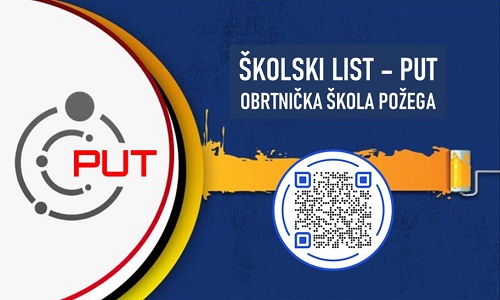Tesari obrađuju drvo, izrađuju skele, oplate i razne građevne konstrukcije. To su uglavnom drvene konstrukcije pri gradnji mostova, cesta, brodova, tvorničkih hala i različitih zgrada. Pretežit dio posla na zgradama čini izradba krovnih konstrukcija (podloga za krovne pokrivače).
Nakon što odrede radni zadatak, tesari na temelju tehničko-tehnološke dokumentacije odabiru potrebne materijale, alate i strojeve. U prvom redu pripremaju konstrukcijske elemente, koje zatim spajaju u jedinstvene cjeline. Pri tomu je važno da posao bude dobro isplaniran te da mjerenje i obilježavanje elemenata bude precizno. Elemente spajaju u cjeline uglavnom čavlima, vijcima i metalnim okovima. U radu se služe raznim materijalima. Najčešći to su drvo, kovine, plastika i drugi zamjenski materijali. U pripremnoj radnoj fazi tesari rabe razne strojeve za obradbu drva, kao što su pile, blanjalice, brusilice i bušilice.
Budući da tesari izrađuju konstrukcije koje su bitne za stabilnost i sigurnost određenih građevina i ljudi koji na njima rade, libelama, viskovima i drugim mjernim instrumentima prijeko je potrebno stalno nadzirati kakvoću napravljenoga. U te poslove ulazi i izradba skela (privremenih konstrukcija) kojima se osiguravaju radnici koji rade na visini, poput njih samih. Tesari najčešće izrađuju velike i zamršene konstrukcije, i to najprije u dijelovima, koje potom spajaju u cjeline. Dio poslova mogu obavljati na tlu, a najveći dio izvode na visini. Od tesara koji rade u obrtništvu zahtijeva se i izradba tehničke dokumentacije, troškovnika i određivanje proizvodnih cijena.
Pripremni dio poslova tesari obavljaju u radionicama, gdje na strojevima obrađuju elemente koje poslije ugrađuju u konstrukcije. Pri tim poslovima katkada su izloženi buci iznad dopustive razine (više od 90 dB). Pretežni dio radnog vremena tesari rade na otvorenome, i to najčešće na građevinama. Relativno velik dio radnog vremena provode na radovima koji se izvode na visini.
Da bi se zaštitili od štetnih utjecaja, tesari moraju primjenjivati tehničku zaštitu (razne tehničke naprave) i osobna zaštitna sredstva, kao što su štitnici za uši ili čepići od švedske vate, zaštitne rukavice, zaštitne cipele, zaštitna odijela, naočale, kacige.
Zbog štetnosti i opasnosti, tesarski poslovi jesu poslovi s posebnim radnim uvjetima, pa na njih ne mogu biti rhtmoređen osobe mlađe od 18 godina. Zdravstveno stanje tesara provjerava se svakih 12 mjeseci. Dođe li u zaposlenika do promjena zdravstvenoga stanja koji bi bili zapreka za obavljanje tesarskih poslova, tesari se rhtmoređuju na druge poslove.
Radni ritam tesara slobodan je i odmori se uzimaju prema potrebi. Prema poslodavčevim potrebama, tesari rade u smjenama, produljeno radno vrijeme, a u sezoni građevnih radova kojiput rade subotom, nedjeljom i blagdanima. Rade i izvan mjesta prebivališta (na terenu). Slobodne dane uzimaju u dogovoru s poslodavcem i prema vlastitim potrebama.
Tesari moraju imati zdrav koštano-zglobni, cirkulatorni i dišni sustav. Prijeko su potrebni uredan vid i vidno polje te osjećaj ravnoteže. Strah od visine i preosjetljivost na buku onemogućuju rad u tesarskom zanimanju. Naglašen je zahtjev za emocionalnom stabilnošću i općom tjelesnom spretnošću.
Osposobljavanje i napredovanje
Tesari se za svoj posao osposobljuju u građevnim školama, kojih ima u Hrvatskoj ima u više gradova, i to za industrijsko i obrtničko zanimanje. Izobrazba za tesare traje tri godine, a za pomoćne tesare pet mjeseci. Nakon trogodišnje prakse u struci, tesari mogu polagati majstorski ispit. U poslu se može napredovati rhtmoređivanjem na bolje rangirana i plaćena radna mjesta, a to su uglavnom organizatorska i poslovodna radna mjesta – brigadiri, poslovođe i voditelji smjena.
Zapošljavanje i zarade
Tesari se uglavnom zapošljavaju u građevinstvu i obrtništvu. Mogu voditi i vlastiti obrt. Potrebe za tesarima znatno su veće od broja radnika osposobljenih za taj posao. Mnoga građevna poduzeća nude učenicima stipendije tijekom školovanja i osiguravaju zaposlenje. Zarade tesara veće su od prosječnih zarada drugih zaposlenika iste kvalifikacije. Određeni postotak dobivaju zbog otežanih radnih uvjeta i deficitarnosti zanimanja.
CARPENTER
Carpenters perform woodwork, make scaffoldings, formwork and various constructions in civil engineering and high-rise buildings. These are mainly wooden structures necessary for the construction of bridges, roads, ships, factory halls and various family and residential buildings. A large part of the work on the buildings includes production of roof structures . The preparatory part of the carpenter's work is performed in workshops where they process the elements on machines that they later install in constructions. Carpenters work most of the time in the open, on tasks that are performed at height. It is the carpenter's duty to follow and use the latest modern technology and formwork
Requierd education
In order to enroll in this educational program, it is necessary to have completed elementary school and a medical certificate from an occupational medicine specialist stating that there are no health contraindications for performing the profession . The education for the profession of a carpenter lasts three years. They go to industrial and craft schools. A carpenter's education is carried out through professional - theoretical classes and apprenticeship where students master the basic skills of the profession. After completing a three-year education, students have the opportunity for educational mobility and can pass the exam for the profession of architectural technician and complete a four-year profession, they can graduate and enroll in faculty.
Knowledge, skills and desirable qualities
After completing a work task, carpenters, based on the technical - technological documentation, should know how to choose the necessary materials, tools and machines and prepare the structural elements that they then combine into unique units. At the same time, it is important that the work is well planned and that the measurement and marking of elements is precise. A part of the work is performed on the ground, and most of it is performed at height. Various materials are used in the work, i.e. wood, fittings and other replacement materials. Carpenters who work in crafts are also required to produce technical documentation, cost estimates and determination of production prices.
Working conditions
They work in closed and open spaces and it is necessary to know and apply safety regulations. A carpenter's health is checked every 12 months.
Employment opportunities
The need for carpenters is significantly greater than the number of workers trained for this job. A great number of construction companies offer scholarships and provide employment.
The wages of carpenters are higher than the average wages of other employees of the same qualification. This is due to difficult working conditions and a shortage of job opportunities. Carpenters have the possibility of advancement by passing the master's exam, which is a prerequisite for opening your own business.
TISCHLER
Tischler bearbeiten Holz, fertigen Gerüste, Schalungen und verschiedene Konstruktionen im Hoch- und Tiefbau. Dies sind hauptsächlich Holzkonstruktionen beim Bau von Brücken, Straßen, Schiffen,Fabrikhallen und diversen Familien- und Wohngebäuden. Ein Tischler erledigt einen Großteil der Arbeiten an den Gebäuden durch Herstellung von Dachkonstruktionen . Der vorbereitende Teil der Tischlerarbeit wird in Werkstätten durchgeführt, in denen man die Elemente auf Maschinen bearbeitet, die später in Konstruktionen eingebaut werden. Tischler arbeiten die meiste Zeit im Freien, an Arbeiten, die sie in der Höhe erledigen. Es ist die Pflicht des Tischlers, die neuesten modernen Technologien und Systeme zu befolgen und anzuwenden.
Erforderliche Ausbildung
Um sich für dieses Ausbildungsprogramm anzumelden, ist ein abgeschlossener Grundschulabschluss erforderlich, ein ärztliches Attest eines Arbeitsmediziners über das Fehlen gesundheitlicher Kontraindikationen zur Ausübung von diesem Beruf. Die Berufsausbildung zum Tischler dauert drei Jahre. Man besucht die Industrie oder Gewerbeschule. Die Ausbildung zum Tischler erfolgt durch professionellen -theoretischen Unterricht und dem Praktikum, in dem die Schüler die Grundfertigkeiten des Tischlerhandwerks erlernen. Nach Abschluss einer dreijährigen Ausbildung wird den Schülern ermöglicht, die Prüfung zum Architekturtechniker zu bestehen und einen vierjährigen Beruf abzuschließen, das Abitur ablegen und sich an der gewünschten Fakultӓt einschreiben zu können .
Kenntnisse, Fähigkeiten und wünschenswerte Eigenschaften
Nach der Festlegung der Arbeitsaufgabe erstellt der Tischler eine technisch-technologische Dokumentation. Man muss wissen, wie man die erforderlichen Materialien, Werkzeuge und Maschinen auswählt und die strukturellen Materialien zu Elementen vorbereitet die dann zu einzigartigen Einheiten kombiniert werden. Gleichzeitig ist es wichtig, dass die Arbeit gut gemacht wird, geplant ist und dass die Messung und Markierung der Elemente präzise ist. Ein Teil der Arbeit wird am Boden ausgeführt, die meisten Arbeitsaufgaben sind aber in der Höhe. Bei der Arbeit werden verschiedene Materialien verwendet, z. B. Holz, Beschläge und andere Ersatzmaterialien. Tischler, die im Handwerk tätig sind, sind verpflichtet technische Dokumentation , Kostenvoranschläge und Ermittlung von Produktionspreisen vorzubereiten.
Arbeitsbedingungen
Tischler arbeiten in geschlossenen und offenen Räumen und es ist notwendig, den Schutz am Arbeitsplatz zu kennen. Der Gesundheitszustand eines Tischlers wird alle 12 Monate überprüft
Beschäftigungsmöglichkeiten
Der Bedarf an Tischlern ist deutlich größer als die Zahl der für diesen Beruf ausgebildeten Arbeitskräfte. Eine grosse Zahl von Bauunternehmen bietet Stipendien an und vermittelt Arbeitsplätze.
Die Löhne von Tischlern liegen über den Durchschnittslöhnen anderer Arbeitnehmer gleicher Qualifikation. Einen bestimmten Prozent erhalten sie aufgrund schwieriger Arbeitsbedingungen und fehlender Arbeitsplätze. Tischler haben die Möglichkeit des beruflichen Aufstiegs durch das Bestehen der Meisterprüfung.










